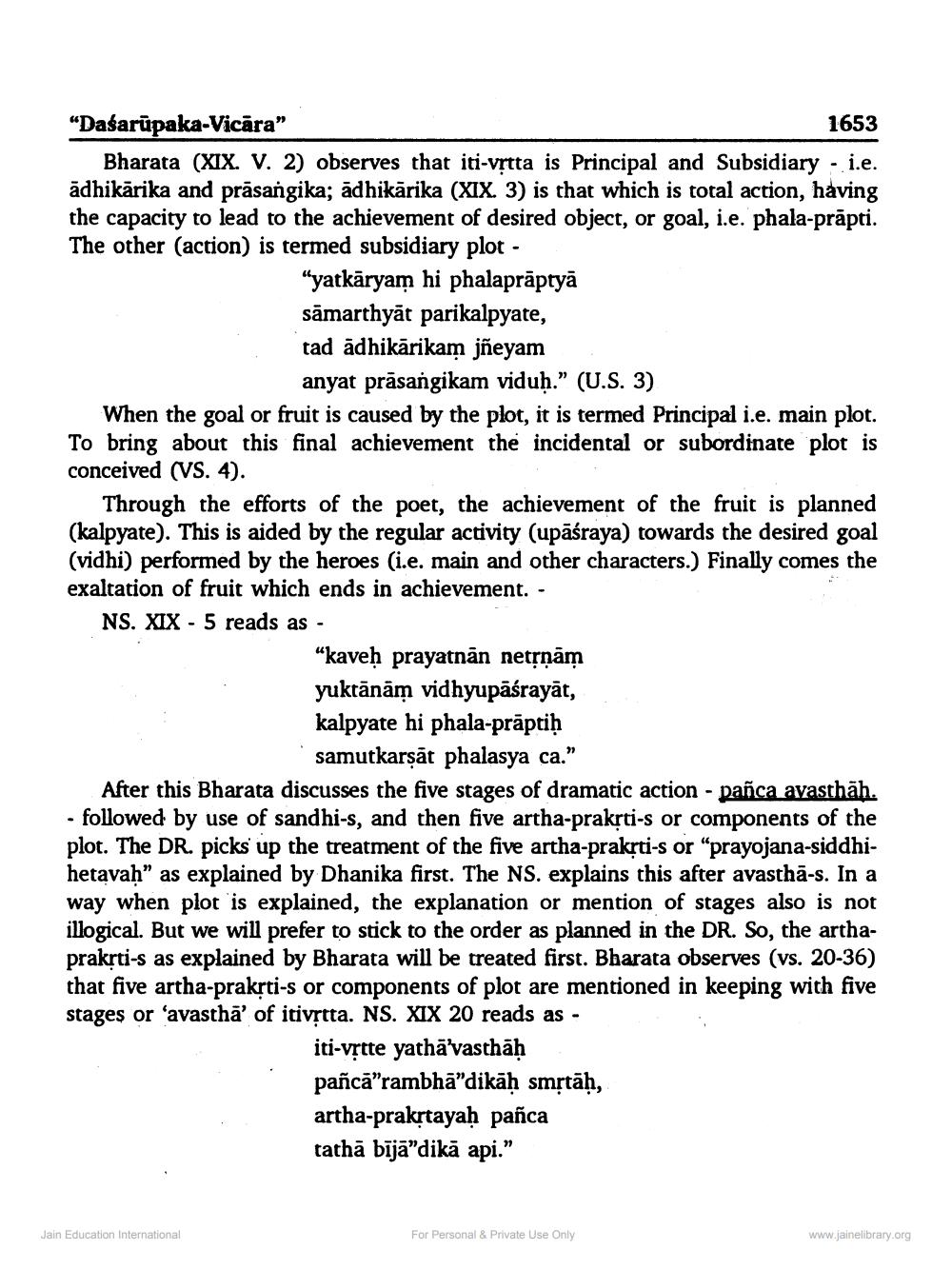________________
"Dasarūpaka-Vicăra"
1653
Bharata (XIX. V. 2) observes that iti-vrtta is Principal and Subsidiary - i.e. ādhikarika and prāsangika; adhikārika (XIX. 3) is that which is total action, having the capacity to lead to the achievement of desired object, or goal, i.e. phala-prāpti. The other (action) is termed subsidiary plot -
"yatkāryam hi phalaprāptyā sāmarthyāt parikalpyate, tad ādhikārikam jñeyam
anyat prāsangikam viduḥ." (U.S. 3) When the goal or fruit is caused by the plot, it is termed Principal i.e. main plot. To bring about this final achievement the incidental or subordinate plot is conceived (VS. 4).
Through the efforts of the poet, the achievement of the fruit is planned (kalpyate). This is aided by the regular activity (upāśraya) towards the desired goal (vidhi) performed by the heroes (i.e. main and other characters.) Finally comes the exaltation of fruit which ends in achievement. - NS. XIX - 5 reads as -
"kaveḥ prayatnān netņņām yuktānām vidhyupāśrayāt, kalpyate hi phala-prāptiḥ
samutkarsāt phalasya ca." After this Bharata discusses the five stages of dramatic action - pañca avasthāh. · followed by use of sandhi-s, and then five artha-prakrti-s or components of the plot. The DR. picks up the treatment of the five artha-prakrti-s or "prayojana-siddhihetavah" as explained by Dhanika first. The NS. explains this after avasthā-s. In a way when plot is explained, the explanation or mention of stages also is not illogical. But we will prefer to stick to the order as planned in the DR. So, the arthapraksti-s as explained by Bharata will be treated first. Bharata observes (vs. 20-36) that five artha-prakrti-s or components of plot are mentioned in keeping with five stages or 'avastha' of itivtta. NS. XIX 20 reads as -
iti-vștte yathā'vasthāḥ pancā”rambhā”dikāḥ smộtāḥ, artha-prakrtayaḥ pañca tathā bījā"dikā api.”
Jain Education International
For Personal & Private Use Only
www.jainelibrary.org




